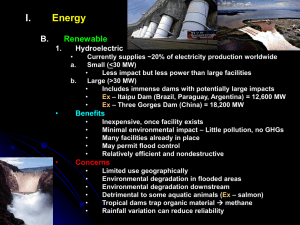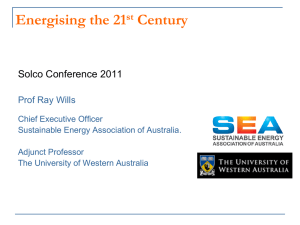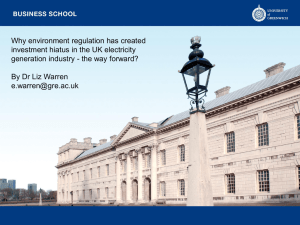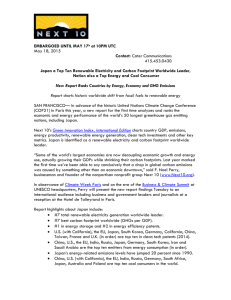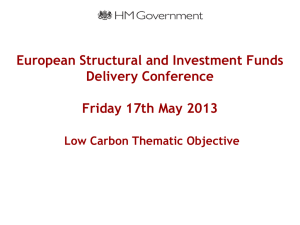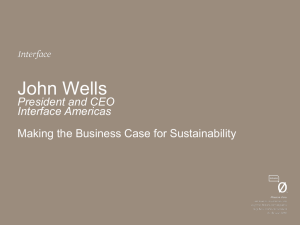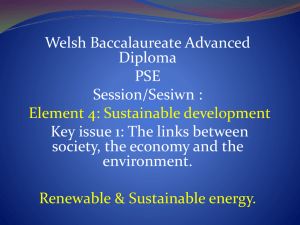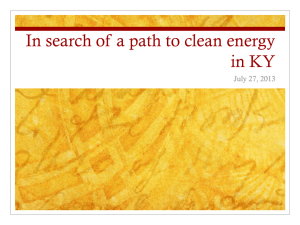Carbon Tax and Renewable Energy
advertisement
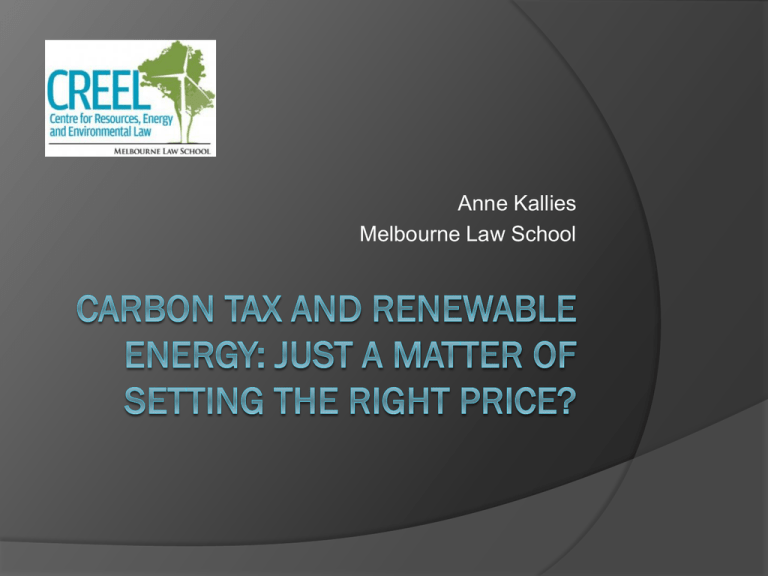
Anne Kallies Melbourne Law School The discussion in Australia All about the price? ALP – $20-30 per tonne Greens – more than $40 per tonne Business council of Australia - $ 10 per tonne (Liberals – no carbon price) Why is Renewable Energy important for Australia’ mitigation effort? www.nt.gov.au/nreta/environment/greenhouse/emissions/source.html Australia’s Policy commitments 60% emissions cuts by 2050 5% emissions cuts by 2020 Garnaut Quote With a carbon price in place, current climate change mitigation policies would not be a cost-effective way to reduce emissions. Most, including the Renewable Energy Target and feed-in tariffs, should be phased out. (Ross Garnaut, Climate Change Review Update (2011)) German quote Support for Renewable Energy and Emissions Trading: We need both! (Deutsche Institut für Wirtschaftsforschung (DIW Berlin), Wochenbericht 11/2009) The Theory: cost-effectiveness carbon price alone to drive optimal deployment of low-carbon technologies/ specific renewable policies would raise mitigation costs, by displacing low cost ETS reduction with more expensive RE reduction The Theory – Green serves the dirtiest? Green serves the dirtiest? Addresses the interaction between RE support policies and emissions reduction policies “while overall fuel production falls as a result of combined ETS and TGC quotas, the dirtiest producers actually increase output to keep total CO2 Emissions at the binding ETS ceiling” (Sinn, Das Gruene Paradox (2008), see also Boehringer and Rosendahl, Green serves the dirtiest (2009)) Targeted Renewable Energy Regulation - Objectives Climate change mitigation Energy security Protection from price volatility of fossil fuel Reduction of other pollutants and health risks of fossil fuel use Building green industry for the future Supporting diverse portfolio of diverse renewable sources Carbon Price - Objectives Lowering emissions by correcting market failure (at least cost?) Electricity transformation under a carbon price? Garnaut scenario: Lowering demand (3% short term/7% long term) High uptake of gas (in the short to medium term) carbon price rises - costs of newer technologies fall with r&d and experience, less emissions-intensive forms of generation will become competitive Problems with this scenario Is there such a thing as short term changes in electricity markets? The lock-in question. Renewables need market deployment to become viable Other barriers for renewables cannot be addressed Electricity investment and long-term perspectives Electricity generation and transmission infrastructure is a long-term investment New generation patterns are locked-in for a long time Danger of locking-in a gas and wind future? Market deployment Renewable energy needs market deployment! (Zero Carbon, Renewable Energy Technology Cost Review) Barriers for Renewable Energy Institutional change needed for renewable energy: deregulated electricity market design supports centralised large scale constant generation – disadvantages distributed, intermittent renewables “Climate change is a long term issue. It might be important to implement higher cost options together with lower cost options, if the deployment of the former has the potential to reduce the longer term costs of mitigation” (Philibert, IEA, 2011) Final Thoughts Sustainable development and a low carbon future - what is equitable? Australia needs a long-term vision instead of a carbon price discussion that is narrowly concentrated on low cost abatement Thank you! Anne Kallies Centre for Resources, Energy and Environmental Law, Melbourne Law School
